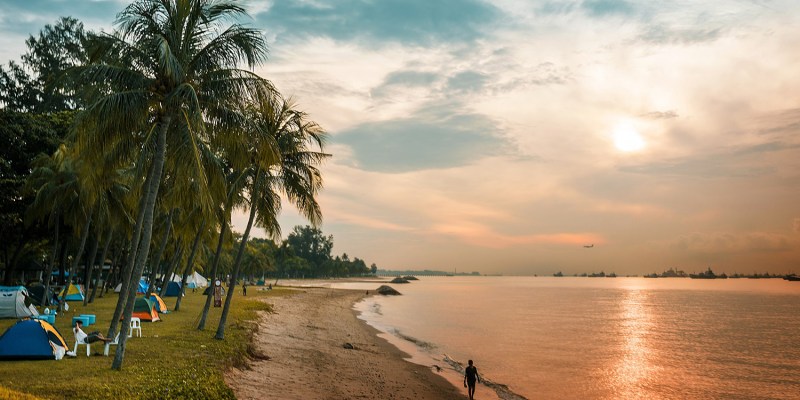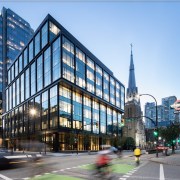A view of the sunrise at East Coast Park, Singapore
In Singapore, severe erosion over the years has caused parts of the shoreline along the coastal parks to recede considerably. Surbana Jurong’s Coastal Engineering team worked with Singapore’s NParks from 2017 to 2022 to design and implement the coastal erosion protection measures and rehabilitate the shorelines at five coastal parks around Singapore, including Sungei Buloh Wetland Reserve in the north, East Coast Park in the south-east, and three coastal parks near Changi Airport, namely the Coastal Park Connector at Changi Coast, Changi Beach Park and Changi Boardwalk.
The coastal engineering team is working on solutions to prevent fine-grained beach sand from being progressively washed away by alongshore currents, resulting in sand accretion at other side of the beach. The coastal erosion protection measures implemented include geotextile containers (geobags) revetment, rock revetment, and beach nourishment.
Keeping beaches safe and scenic
East Coast Park is a man-made beach protected by breakwaters (headlands), with total erosion length around 1km. Being the largest park in Singapore, soft engineering measures were implemented to keep the park safe and yet beautiful for visitors. The team increased the height of the shore with compacted sand and placed geotextile containers of the same colour as the surrounding beach sand for shore protection.
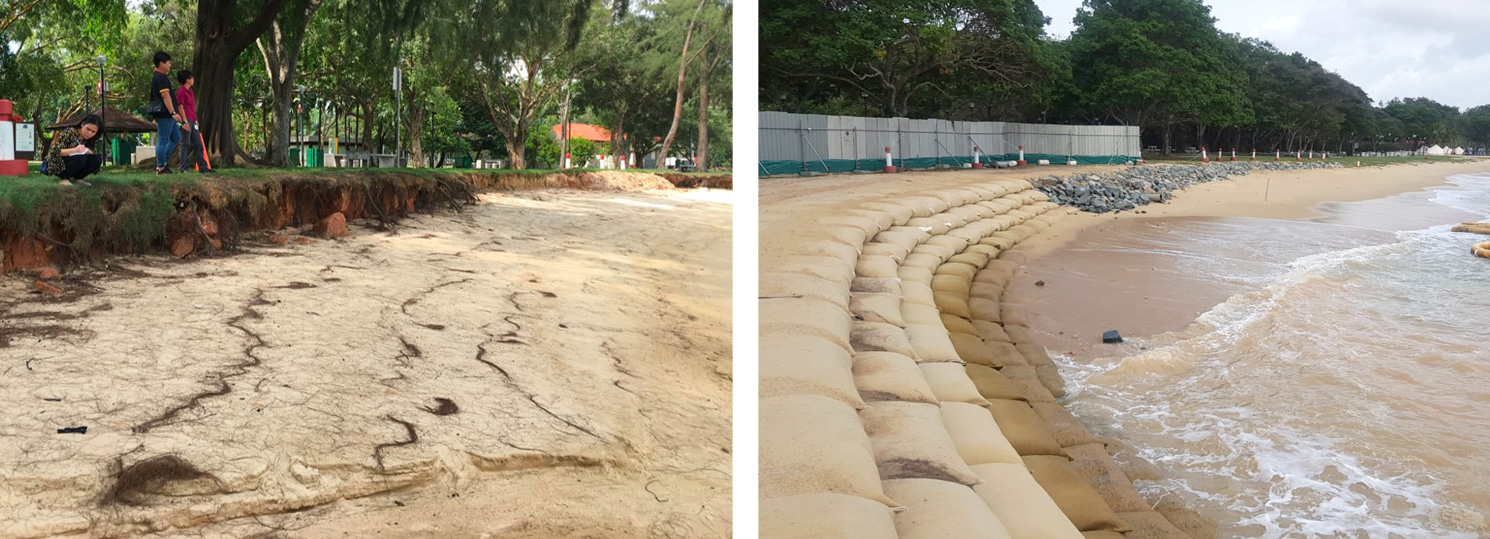
Before (left) and after (right) rehabilitation of the beach between 2017 and 2021, using sand-coloured geobags
At Changi Boardwalk, a void beneath the boardwalk was formed due to coastal erosion, rendering the boardwalk unsafe for visitors. Rock revetment, a coastal protection technique where a protective wall or barrier is built to prevent erosion, was constructed along the eroded stretch to create a buffer and to enhance the ability of the coastline to absorb the energy from the incoming waves to slow down the erosion. A special brand of rock material was chosen so that gaps were left in between the rocks to encourage living organisms to breed, bringing the concept of living shoreline to life.
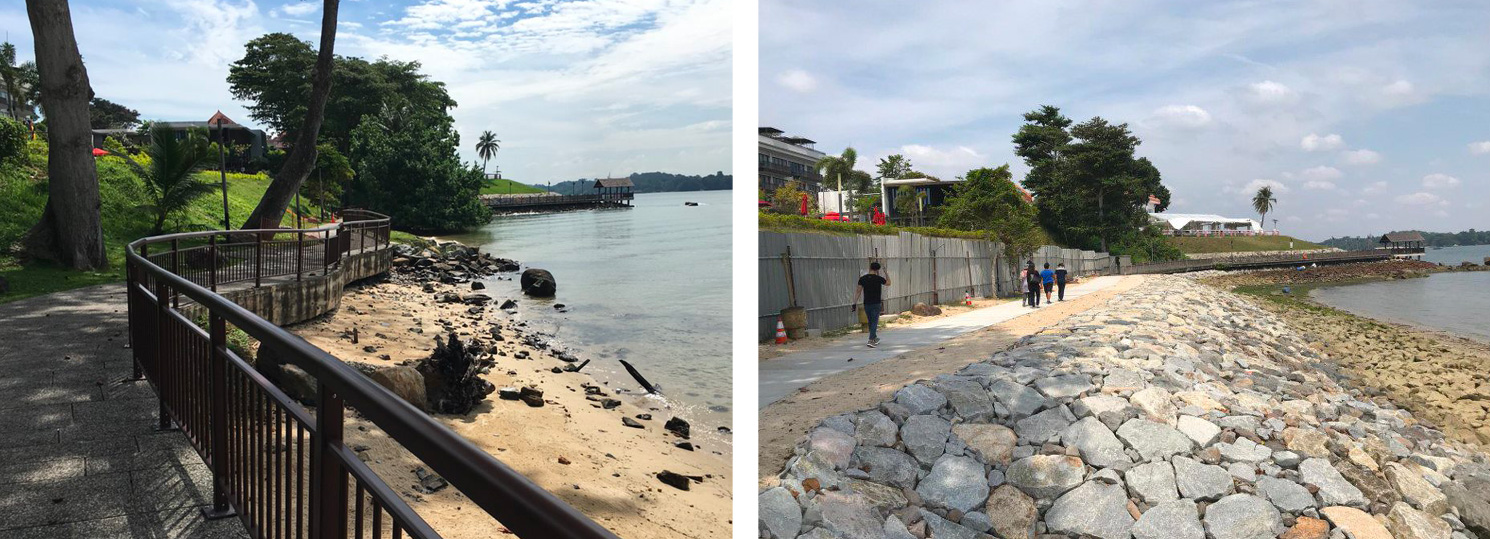
Before (left) and after (right) rehabilitation of the beach between 2017 and 2019 with the use of rock revetment.
Adapting to nature’s timeline
The team also took efforts to protect the many wildlife species at the various parks.
Prior to construction in 2018, the team detected otters residing under the collapsed boardwalk at Changi. The team halted the construction, attended educational and awareness programmes about otters, and adjusted the construction schedule to minimise stress and disturbance to the otter family, which just had a new litter.
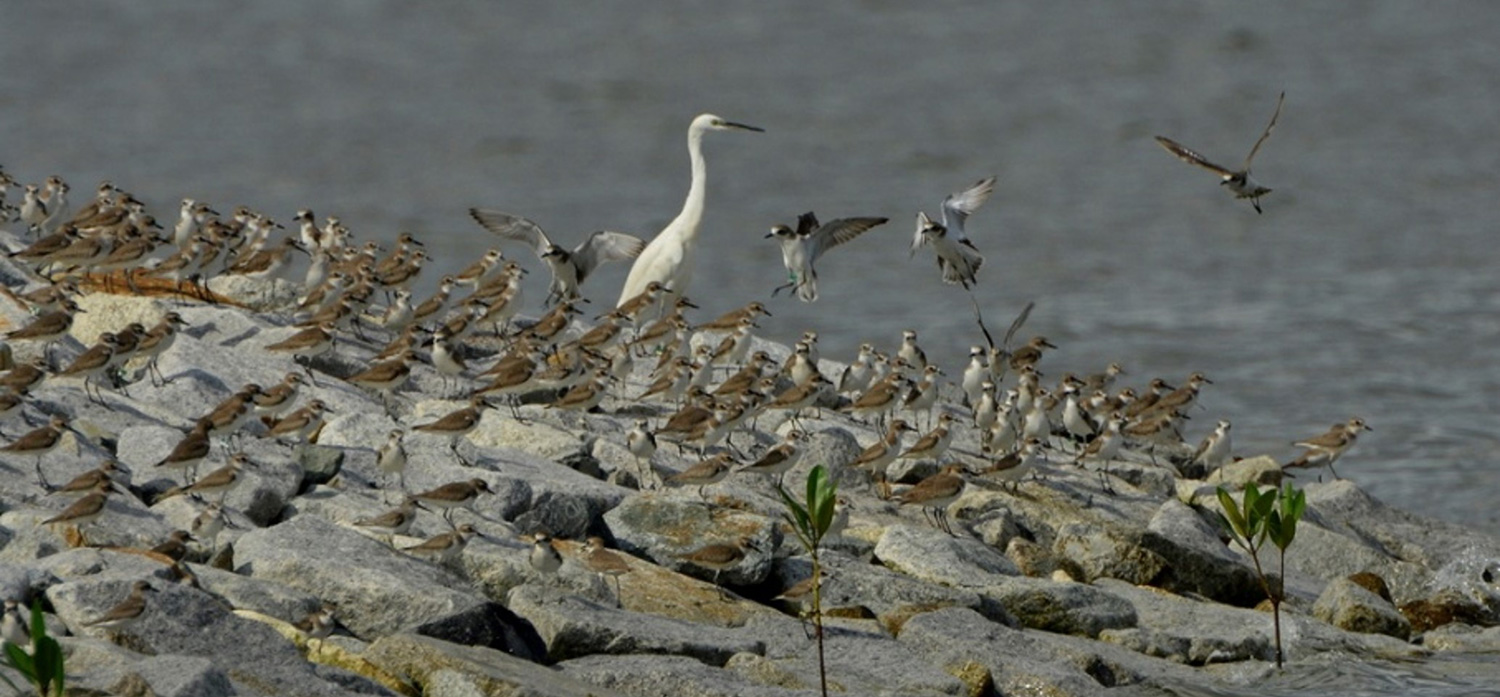
Rock revetment is used to protect the shore and as a spot for birds to perch.
At Sungei Buloh Wetland Reserve, coastal protection work was adapted to protect the 200ha reserve of mangrove swamp, mudflats, ponds, and rainforest along the north-western shore, an important base for migratory birds between September and March annually. Mindful of the migratory shorebirds period, rock revetment construction works was carried out only during March to September each year. The concept of living shoreline was also implemented to minimise changes to the natural environment and serve as perching locations for the birds, which provides an additional food source.
At East Coast Park, the team took pains to coordinate closely with all stakeholders involved in the coastal project to minimise construction during the turtle nesting season between May and October during the five-year project. A turtle nesting site at one of the eroded stretches at East Coast Park led to limited construction activities during the nesting season. From May to October, the project team made necessary arrangements and close coordination works with all stakeholders to ensure that the impact of the construction activities to the nesting site were minimal, to prevent additional stress and risk of harm to the turtles.
“This project showed us it is possible to protect our shorelines against erosion while preserving nature,” said Lyna Meilinda, Senior Principal Engineer. “It is a balance we have to continually adhere to in all our Projects.”
Project Contacts:
Lyna Meilinda | Senior Principal Engineer (Coastal)
Surbana Jurong
E: [email protected]


